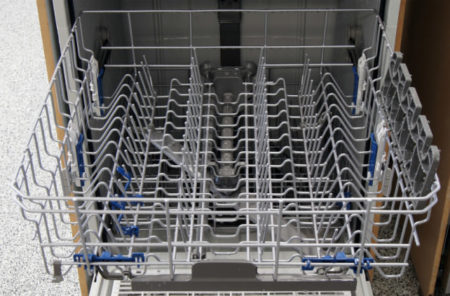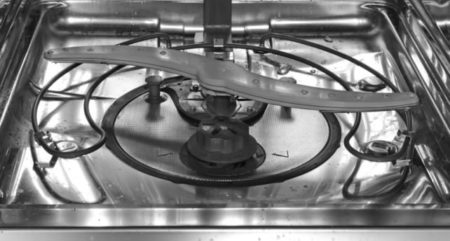Any malfunction in the dishwasher, even the most complex and unpleasant one, has a clear cause of the breakdown, which can be fixed. The most common problem when the dishwasher does not dry dishes and does not heat water, or does it, but very badly without bringing the required result.
However, if you open the door of the dishwasher, and you see a clean dish in front of you, on which there is a small amount of water, do not worry, everything is in order with the machine. The fact is that most machines have a condensation drying system, which is not entirely ideal. Since the evaporated water settles on the walls of the chamber, which are mostly made of metal (it cools down at the same rate as the inner lining).
Reasons for malfunction
 In the event that the dishwasher does not dry the dishes, in addition to washing it poorly, then we can definitely say that a serious breakdown occurred, due to which the functionality of the system was violated. In dishwashers in which a condensing drying system is installed, there are the following breakdowns:
In the event that the dishwasher does not dry the dishes, in addition to washing it poorly, then we can definitely say that a serious breakdown occurred, due to which the functionality of the system was violated. In dishwashers in which a condensing drying system is installed, there are the following breakdowns:
- heating element malfunction - if it breaks down, the element will not be heat water, which means that the dishes will not wash and dry;
- malfunction of the temperature sensor - this device regulates the operation of the heating element, giving it commands to start drying. If it breaks down, the draining process will not start. Sometimes the machine may stop during the dishwashing phase due to a sensor malfunction;
- Dishwasher control module relay malfunction.
However, as for machines with a turbo-drying system, the cause of the breakdown can be hidden in the ventilation system, which blows air through the dishwashing chamber. In this case, all dishes will be quite wet.
![]() See also - Why the dishwasher does not turn on: causes of the malfunction
See also - Why the dishwasher does not turn on: causes of the malfunction
How to troubleshoot
 Below we will consider ways of replacing parts, as for the heating element and the temperature sensor, in case of their breakdown, only a complete replacement of their components will help. Further details about each of the elements:
Below we will consider ways of replacing parts, as for the heating element and the temperature sensor, in case of their breakdown, only a complete replacement of their components will help. Further details about each of the elements:
- In almost all Bosch dishwashers and models from other manufacturers, the heating element is located in the lower part of the structure at the very base. To dismantle it, you will need to turn the unit on its side and remove the pallet. You can check its performance using a multimeter. If it is necessary to replace the heating element, it is advisable to use a new and original part;
- the temperature sensor is located in the hole of the chamber, which is designed to discharge water. Be careful, in some models, in this camera, there is also a sensor that measures the purity of water.Replacing the temperature sensor will not cause any particular difficulties, it will be necessary to pull the wires out of it, and install a new one in place of the old one. Next, you need to check the performance of the dishwasher.
Now consider the breakdown of the ventilation system and the control relay:
- the relay is located on the control board, which is hidden in the door of the dishwasher. Having disassembled the door, you will find there two such elements; to replace the relay, you will need the skill of using a soldering iron. However, if you are afraid of damaging the board or are not confident in your abilities, it is better to turn to the master, this repair is not expensive;
- with the ventilation system, it is more and more complicated, since it cannot be repaired, only a complete replacement of the unit will help you. Determining that it has stopped working is easy enough - you will not hear the characteristic sound during the drying process. In all models, the fan is placed differently, it all depends on the design of the dishwasher. You will have to disassemble not a small part of the machine to find out where this system is located, if you are not afraid of this then go ahead. But in which case it is better to contact a master who knows the entire design of the unit.
We have covered the main reasons why the dishwasher does not dry dishes, in some cases, the direct intervention of the master may be needed, since the breakdown may be much more serious than you thought.
![]() See also - Dishwasher Drying Types
See also - Dishwasher Drying Types

